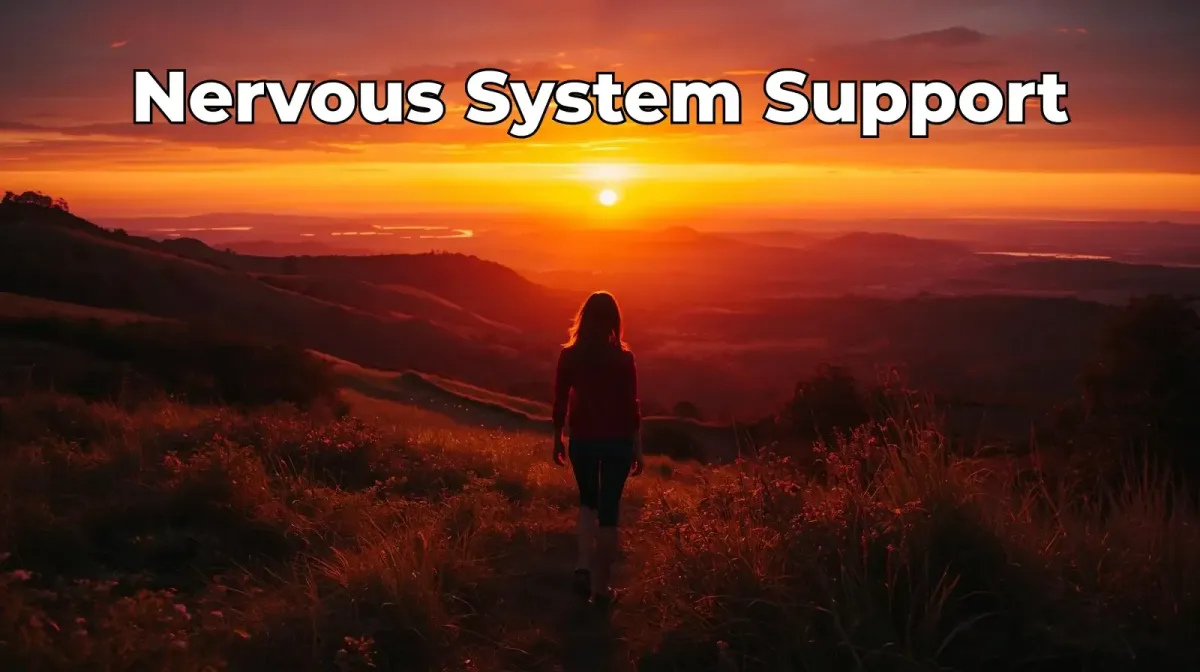Peter Paul Parker's Official Website
Articles And Guidance

Nervous System Support for Highly Sensitive People: Stay Calm, Centred and Grounded
Why HSP nervous systems need a different approach
If you often feel “too much, too fast, too soon,” it’s not a flaw—it’s how your finely tuned nervous system processes life. For Highly Sensitive People, support begins with regulation first, meaning later. When your body settles, clarity returns, choices expand, and compassion becomes easier. If you’re new to the trait (or want a refresher), start with the cornerstone: What Is a Highly Sensitive Person? The Complete Guide
A simple map: Recognise → Regulate → Relate → Reset
1) Recognise: spot the signs early
HSP dysregulation often shows up as prickliness, tunnel vision, racing thoughts, shallow breathing, or the urge to escape. Learn your “early tells” so you can act before a spiral. A quick primer:
Window of Tolerance: HSP Quick Map
Micro-check: “Where am I now—within my window, edging out, or already out?” One breath, one choice.
2) Regulate: calm the body first
You can’t think your way out of a stress cascade. Breathe, ground, move—then decide.
Try one minute of a vagus-nerve pattern (e.g. longer exhales).
Use 5-4-3-2-1 sensory grounding to orient to safety.
Add a 2-minute movement reset (neck/shoulder/hip release).
Guided steps:
Vagus Nerve Breathing Patterns for HSPs
2-Minute Body Resets for HSPs
3) Relate: co-regulate with safe support
Nervous systems settle faster together. Sync breath with a trusted person, speak feelings simply, and ask for what you need (“quiet for five minutes,” “a hug,” “a glass of water”). If aloneness bites, this helps:
Spiritual Loneliness: Find Support When Lost
4) Reset: close the stress cycle
Even after the trigger ends, your system may still hum. Complete the loop with gentle movement, a sighing exhale, warm shower, or a brief stretch flow. Build routine resets here:
Overwhelm Recovery Routines for HSPs
Quick tools you can use anywhere (60–180 seconds)
Box breath (4-4-4-4): inhale 4, hold 4, exhale 4, hold 4.
Physiological sigh: inhale, tiny top-up inhale, long sighing exhale.
Orienting: turn head slowly; name three safe things you see.
Mini somatic scan: jaw, shoulders, belly—soften 10%.
Shake & settle: 30–60s gentle shake, then stillness.
Need step-by-step guidance?
Vagus Nerve Breathing Patterns for HSPs
2-Minute Body Resets for HSPs
Daily regulation rituals (keep them tiny, keep them steady)
Morning (3–7 mins): one breath pattern + one gentle movement flow.
Midday (2–5 mins): screen break, orienting, neck/shoulder reset.
Evening (8–12 mins): lights down, longer exhales, stretch, short journal.
Build or refine your rituals:
Morning Rituals for HSPs: Start Calm
Sleep for Emotional Healing (HSP Edition)
Emotional Healing Weekly Review Ritual (HSP)
Prefer a body-led approach? Try a soothing flow here:
Qi Gong for Emotional Healing: Move, Breathe, Release
When thoughts keep re-igniting your body
For HSPs, cognition and physiology loop. Calm the body, then gently work with the mind.
Defusion (ACT): name the thought (“The ‘What if I fail?’ story is here”).
Parts (IFS): “A part of me is scared—and a part is steady.”
DBT skills: paced breathing, temperature shifts, soothing self-talk.
Mind tools that fit sensitive wiring:
ACT (Defusion and Values) for HSPs
IFS (Parts Work) for HSPs: Befriend Your Inner Team
DBT Skills for HSPs: Gentle Tools
Polyvagal basics (friendly notes for sensitive systems)
Think of your nervous system like a dimmer, not a switch. You move between calm-and-connected, mobilised, and shutdown states. The aim isn’t perfect calm—it’s flexible flow and a wider window. Start here:
Polyvagal Basics for Sensitive People (HSP Guide)
If you dip into freeze or panic, prioritise safety signals: warm tone, soft gaze, longer exhale, supportive posture, and a slow return to movement.
Handling spikes and flashbacks (without shame)
Sometimes a present-day stressor taps an old wound and the reaction feels “too big.” That’s your system trying to protect you. Meet it with gentleness and body-first tools:
Emotional Flashbacks: Grounding for HSPs
Somatic Tracking for HSPs: Build Body Trust
Mini practice: hand on heart, other hand on belly. Inhale softly for 4, exhale 6–8 with a sigh. Whisper: “I’m safe enough right now.”
7-day nervous system reset (5–10 mins/day)
Day 1 – Map your window → name your tells.
Window of Tolerance: HSP Quick Map
Day 2 – Choose one breath → practise twice.
Vagus Nerve Breathing Patterns for HSPs
Day 3 – Add a body reset → after work.
2-Minute Body Resets for HSPs
Day 4 – Mind loop tool → one defusion or parts script.
ACT (Defusion and Values) for HSPs
IFS (Parts Work) for HSPs: Befriend Your Inner Team
Day 5 – Co-regulate → three minutes with a safe person.
Spiritual Loneliness: Find Support When Lost
Day 6 – Evening wind-down → light low, long exhales, stretch.
Sleep for Emotional Healing (HSP Edition)
Day 7 – Review & plan → choose two anchors for next week.
Emotional Healing Weekly Review Ritual (HSP)
Further Reading (build your soothing toolkit)
Window of Tolerance: HSP Quick Map
Vagus Nerve Breathing Patterns for HSPs
2-Minute Body Resets for HSPs
Polyvagal Basics for Sensitive People (HSP Guide)
Overwhelm Recovery Routines for HSPs
Somatic Tracking for HSPs: Build Body Trust
Qi Gong for Emotional Healing: Move, Breathe, Release
FAQs
1) Why do I get overwhelmed so quickly compared to others?
Your system processes more data per moment. It’s not weakness—it’s wiring. Learn early tells and apply tiny regulation tools fast.
Window of Tolerance: HSP Quick Map
2) What’s the fastest way to calm down in public?
Try a physiological sigh or box breath, soften shoulders, orient to the room, then choose one kind next step.
Vagus Nerve Breathing Patterns for HSPs
3) How can I stop night-time spirals?
Dim lights, lengthen exhales, write a 3-line “worry then plan,” and use a short stretch flow before bed.
Sleep for Emotional Healing (HSP Edition)
4) My triggers feel ‘too big’. Is something wrong with me?
No—often a present stress touches an old wound. Meet it somatically first, then use mindful thought tools.
Emotional Flashbacks: Grounding for HSPs
ACT (Defusion and Values) for HSPs
5) I forget my tools when stressed. Any tips?
Make them ridiculously small and visible: a sticky note with “Exhale long,” timer prompts, or a 2-minute reset after meetings.
2-Minute Body Resets for HSPs
Next steps: turn regulation into lived reality
You don’t have to do this alone. If your nervous system feels stuck in survival—or resets don’t stick—these two gentle paths give you practical support for the exact tools we’ve covered:
Free Soul Reconnection Call — A calm, one-to-one space to settle your system, map triggers, and design tiny, repeatable routines that keep you in your window.
Dream Method Pathway — A self-paced, 5-step map (Discover → Realise → Embrace → Actualise → Master) to heal loops, build daily regulation, and turn sensitivity into steady strength.
Choose the route that feels kindest today. Both are designed to help highly sensitive people stabilise their nervous system—gently, steadily, and for real change.
I look forward to connecting with you in my next post.
Until then, be well and keep shining.
Peter. :)
Feeling Spiritually Lost? 🢂
Copyright Peter Paul Parker 2023 <<< ✺✺✺✺✺✺✺✺✺✺✺✺✺✺✺✺✺✺✺✺✺ >>> Terms And Conditions - >>> Privacy - Linked In - YouTube - Facebook -
